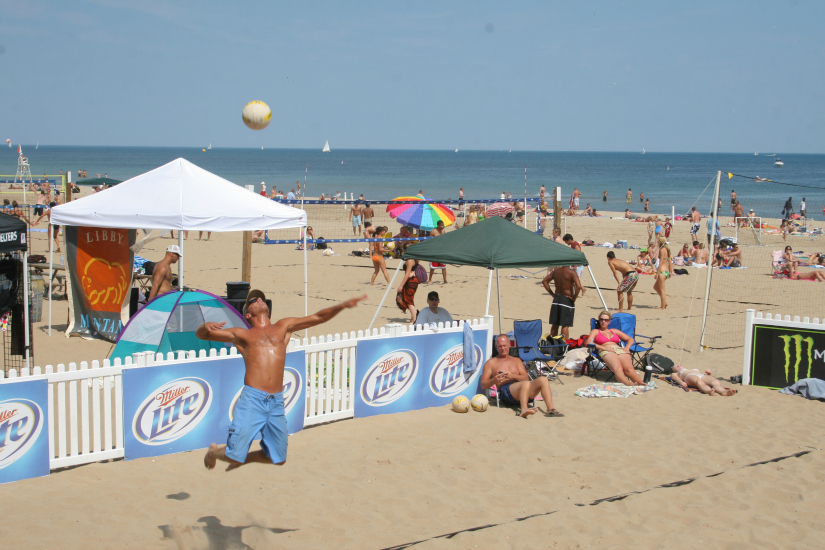 While you’re enjoying the water, keep alert and check the local weather conditions. Daily weather reports and swim hazard risks are available on home page of the Milwaukee County Beaches website.
While you’re enjoying the water, keep alert and check the local weather conditions. Daily weather reports and swim hazard risks are available on home page of the Milwaukee County Beaches website.
Make sure you swim sober and that you never swim alone. And even if you’re confident in your swimming skills, make sure you have enough energy to swim back to shore.
- Have young children or inexperienced swimmers wear U.S. Coast Guard-approved life jackets in and around the water. No one should use any other type of floatation device unless they are able to swim.
- Check for depth and obstructions before diving, and go in feet first the first time.
- Pay especially close attention to children and elderly persons when at the beach. Even in shallow water, wave action can cause a loss of footing.
- Keep a lookout for aquatic life. Water plants and animals may be dangerous. Avoid patches of plants. Leave animals alone.
Avoid currents
Rip currents are responsible for deaths on beaches every year, and for most of the rescues performed by lifeguards. Beachgoers should be aware of how dangerous rip currents are, and swim only at beaches with lifeguards in the designated swimming area.
Lake Michigan is particularly dangerous. Over the last 10 years, Lake Michigan has had seven times the number of rip current incidents (which includes rescues and fatalities) than the other Great Lakes. In 2013, the Wisconsin Department of Health Services reported 36 deaths due to submersion or drowning in natural water.
Rip currents can form in any large open water area, such as low spots and breaks in sandbars, or near structures such as jetties and piers.
- If you are caught in a rip current, stay calm and don’t fight the current.
- Swim parallel to the shore until you are out of the current. Once you are free, turn and swim toward shore.
- If you can’t swim to the shore, float or tread water until you are free of the rip current and then head toward shore.
- If you feel you can’t make it to the shore, draw attention to yourself by waving and calling for help.
- Stay at least 100 feet away from piers and jetties. Permanent rip currents often exist near these structures.
- If someone is in trouble in the water, get help from a lifeguard. If a lifeguard is not available, have someone call 9-1-1.Throw the victim something that floats — a lifejacket, cooler, inflatable ball — and yell instructions on how to escape the current.
Swim safety
- Swim in designated areas supervised by lifeguards.
- Maintain constant supervision. Never leave a young child unattended near water and do not trust a child’s life to another child; teach children to always ask permission to go near water.
- If you have a pool, secure it with appropriate barriers. Many children who drown in home pools were out of sight for less than five minutes and in the care of one or both parents at the time.
- Avoid distractions when supervising children around water.
- If a child is missing, check the water first. Seconds count in preventing death or disability.
- Have appropriate equipment, such as reaching or throwing equipment, a cell phone, life jackets and a first aid kit.
- Know how and when to call 9-1-1 or the local emergency number.
- Protect your skin. Limit the amount of direct sunlight you receive between 10:00 a.m. and 4:00 p.m. and wear sunscreen with a protection factor of at least 15.
- Drink plenty of water regularly, even if you’re not thirsty. Avoid drinks with alcohol or caffeine in them.







Leave a Reply